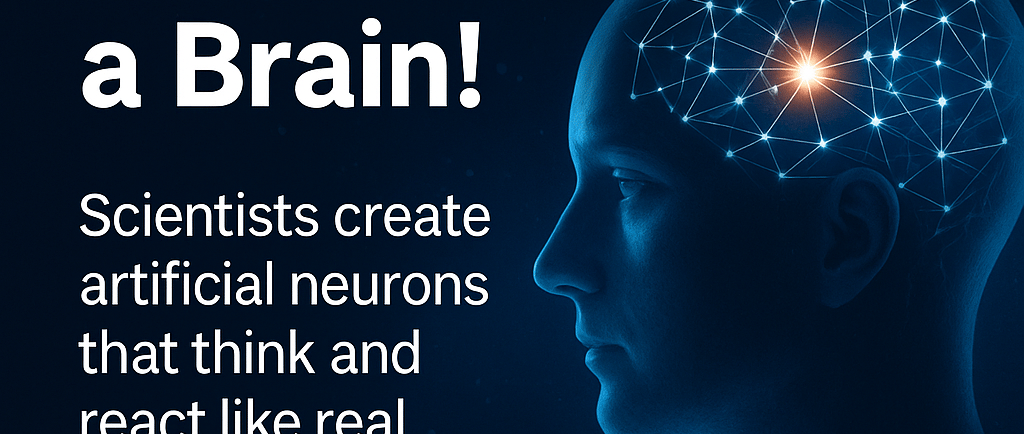Scientists Create Artificial Neurons That Function Like the Human Brain
Scientists Create Artificial Neurons That Function Like the Human Brain Researchers at the University of Southern California (USC) have successfully developed artificial neurons that closely mimic the essential electrochemical behavior of real human brain cells — a major breakthrough in neuromorphic computing and next-generation AI hardware. How These Artificial Neurons Work Unlike traditional computer chips that rely purely on digital processing, these new neurons operate using ion movement, similar to how real biological neurons send and receive signals. The artificial neurons are built using silver ions, which move through a thin oxide layer to create electrical pulses. This process is incredibly similar to the way real neurons convert electrical signals into chemical signals and back again. Lead researcher Yang explained that although the materials differ from natural brain cells, the underlying physics and behavior are almost the same. He also noted that silver was chosen because it diffuses easily and allows the artificial neurons to function with a very simple and compact structure. Smaller, Faster, and More Energy-Efficient The team designed these neurons using a "diffusive memristor", allowing each artificial neuron to be almost the same size as a single transistor, making them much smaller than earlier designs. While today’s AI systems use large amounts of energy and powerful GPUs, the human brain only needs about 20 watts to perform complex thinking and learning. These new artificial neurons aim to bring AI hardware closer to the brain’s efficiency. A Step Toward More Human-Like AI This development represents a shift from software-based AI to hardware-based intelligence, where the learning ability happens inside the chip itself, rather than only through code. If this technology can be scaled, it could power: Edge AI devices Autonomous robots and drones Smart wearable technology Compact, low-power computing systems Challenges Ahead Despite the major progress, there are still hurdles: Silver ions are not yet compatible with standard chip manufacturing. Large-scale integration of millions of artificial neurons remains complex. New programming models and tools must be developed to support this hardware. The researchers state that their next goal is to combine large numbers of these neurons and test systems that behave even closer to a real biological brain.
ARTIFICIAL INTELLIGENCE
Fatima Yaseen
10/30/20251 min read


